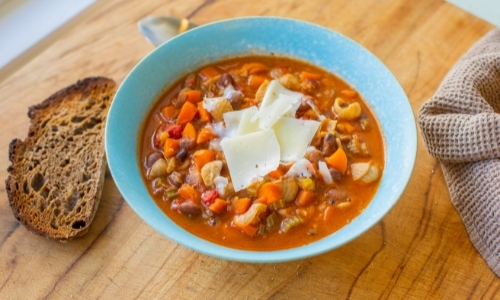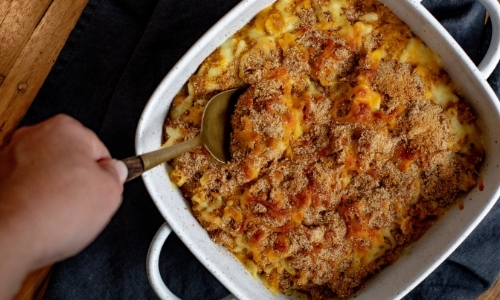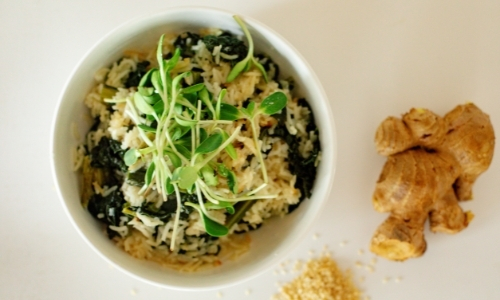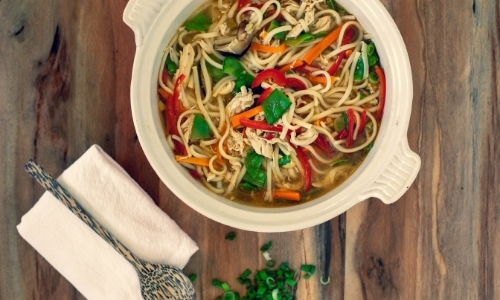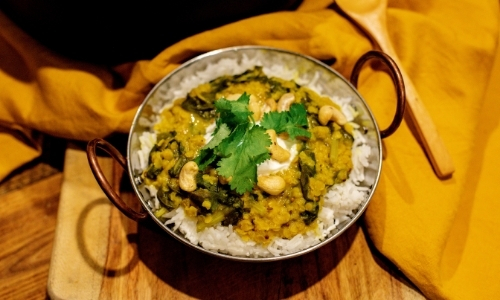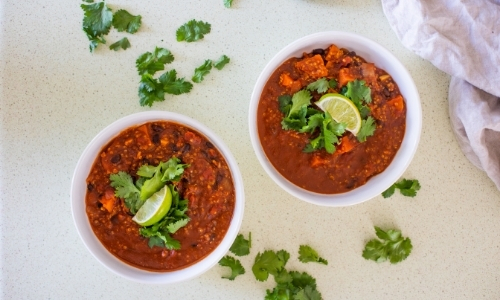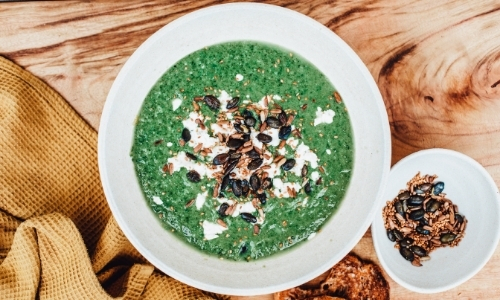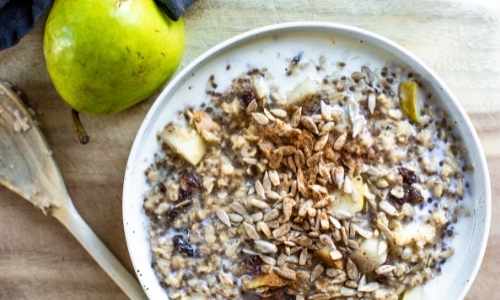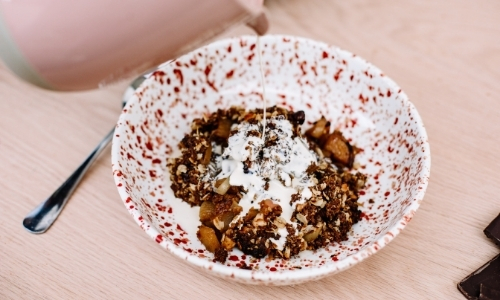Looking for the best winter foods and recipes?
Quick overview
- It’s important to include good sources of proteins, healthy fats, complex carbohydrates and fruit and vegetables in your diet over the winter
- According to traditional Chinese medicine (TCM), warming meals support your digestion, immune health, and overall wellbeing in the cooler months
- With some simple planning and preparation, strategies like slow cooking and making bigger batches can make winter meals both easy and nutritious
It’s natural to feel drawn to rich, comforting and filling foods during winter, but that doesn’t mean you can’t eat healthily. With a little preparation, you can keep your belly satisfied and your health on track. Read on for nourishing foods to eat in winter, some of the best winter recipes, and preparation tips to make your mealtimes super easy.
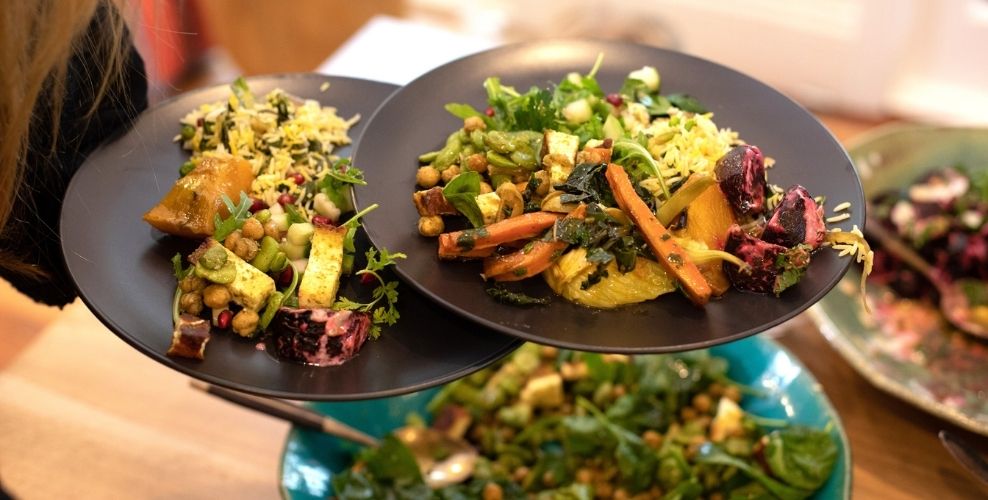
The best foods to eat in winter
It’s important to include good sources of proteins, healthy fats, complex carbohydrates and fruit and vegetables in your diet year-round. Being extra thoughtful with what you include in your winter recipes can have some extra benefits during this chilly season. Check out our picks below for the best foods to eat in winter.
Pick your perfect proteins
Protein is made up of building blocks called amino acids, which provide support for the functioning of immune cells that help ward off winter bugs.[1] Great sources include grass-fed lamb and beef, pasture-raised eggs, chicken or turkey, and oily fish like mackerel, salmon or sardines. Legumes such as lentils, tempeh, cannellini beans, chickpeas and black beans are also excellent sources of plant-based protein and prebiotic fibre.
Fats for winter wellbeing
Dietary fats help with the absorption of fat-soluble vitamins like vitamin A, D, E and K, which support both immune system and overall health, especially in the winter months when you may not get as much vitamin D from the sun as needed.[2] Omega-3 fatty acids (from oily fish, for example) also play a supportive role in immune system function.[3] Look out for oily fish (sardines, salmon and mackerel), butter, ghee, coconut oil, olive oil, avocado oil, cold-pressed flaxseed, hemp seed oil, nuts and seeds.
HOT TIP: Keep flaxseed and hemp seed oils in the fridge and drizzle over vegetables or porridge. While you’re at it, pop some nuts and seeds in your porridge too.
Choose your carbohydrates wisely
Complex carbohydrates provide soluble, insoluble and prebiotic fibres as well as essential minerals. Prebiotic fibre, in particular, is a food source for healthy gut bacteria. Since good gut bacteria is linked to healthy immunity, prebiotics are helpful in supporting healthy immune function.[4] Try to include foods rich in prebiotic fibre like Jerusalem artichokes, leeks, onions, garlic, yams, bananas, plantains. Incorporate healthy complex carbohydrates into your meals such as brown rice, sweet potatoes, sourdough bread, rolled oats, barley and quinoa.
On the other hand, some refined carbohydrates – like those found in white bread, white rice and cake aren’t good dietary choices because they only provide a short burst of energy, compared with complex carbohydrates which release energy slowly throughout the day. Once that short burst of energy is over, refined carbohydrates can leave you wanting to eat more to gain more energy, which in the long term can lead to weight gain.
Fruits and vegetables
Aiming for your 5+ servings a day of fruit and vegetables is always important, but try to focus on eating what’s in season during winter to get the most out of your produce. Eat fruit and vegetables that lend themselves to poaching or slow cooking, such as apples, pears, rhubarb, spinach, pumpkin, tomatoes, peas, Swiss chard, leeks and onions.
Best winter recipes
In Chinese medicine, warming meals support your digestion, immune health and overall wellbeing, they’re also nourishing to the soul. Let food be your medicine for body, mind and spirit with these delicious winter warming recipes and winter dinner ideas:
Planning ahead for winter recipes
If you’re a creature of habit, you may find it difficult to switch from your favourite summer salads or go from no-cook to slow-cook. As with most good things, eating a healthy diet requires some forethought – as the old saying goes, ‘If you fail to plan, you plan to fail’.
With that in mind, here are some of our best tips for meal prep in winter.
The freezer is your friend
Frozen peas, spinach, or green beans are excellent mineral- and fibre-rich additions to almost any meal – they go especially well in soups and casseroles. If you’re worried that frozen veggies have lost their nutrients, don’t be! Frozen vegetables are just as nutritious as their fresh counterparts.[5] Just be sure to check the label to make sure all you’re getting is vegetables and not hidden additives.
Stay stocked
Stock cubes are handy, but have you ever used real vegetable, beef or chicken stock as the base of a meal? The flavour is unbeatable and makes for an extra nutrient-rich meal. Used in meals like a risotto, congee, soup, slow-cooked stew, or even just a steaming hot cup of broth, stock provides flavour, essential minerals and gut healing benefits.[6] Try making your own bone broth, or whip together a veggie stock out of leftover vegetable scraps to avoid extra kitchen waste.
Invest in a slow-cooker
Is there anything better than the smell of a stew or curry slow-cooking in your kitchen? All you have to do is kick off your shoes, grab a bowl and enjoy thanks to a small amount of effort in the morning. Take a couple of minutes in the a.m. to add your chosen ingredients, then set and forget. According to TCM, foods that are warming and slow-cooked support healthy digestion. For more information on eating according to the principles of TCM, click here.
Stock the cupboard with plenty of canned goods
Diced tomatoes, canned coconut milk and a variety of legumes such as cannellini beans or lentils are handy for quick stews, soups or curries.
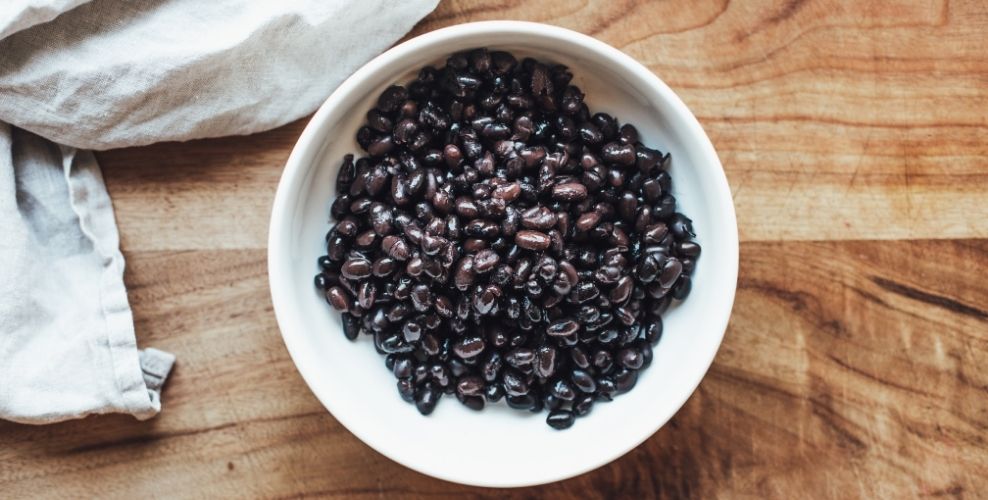
Consider ordering a fruit and veg box from a local supplier
Some great local fresh produce suppliers have cropped up in recent times, offering everything from locally produced fruit and vegetables to meat and seafood. Many companies offer a seasonal mixed produce box, or you can select your own.The benefits include supporting local farmers and businesses, eating the freshest produce available and eating what’s in season (and therefore more nutritious).
Some companies even offer subscription-based services – what could be easier than that?
Go large
Batch cooking is at the core of any good meal prep. If you have room to spare in your fridge and freezer, this can be an excellent option.
Double or even triple your favourite recipes (just make sure they’re foods that freeze well). Then all you have to do is pull them out of the freezer that morning. For more batch cooking inspiration, check out the recipes over at BBC Good Food website.[7]
With just a little bit of preparation (and perhaps the help of a good slow cooker) winter can become a time of enjoyable, nourishing and even time-saving meals.
References:
- Li P, et al. Br J Nutr 2007;98(2):237-252.
- Healthline. Last updated 16 February 2017, accessed June 2021 from https://www.healthline.com/nutrition/fat-soluble-vitamins
- Better Health Channel. Last updated April 2020, accessed June 2021 from https://www.betterhealth.vic.gov.au/health/healthyliving/fats-and-oils
- Carlson, JL. Curr Dev Nutr 2008;2(3):nzy005.
- Innerbody. Last updated February 2023, accessed April 2023 from https://www.innerbody.com/pros-and-cons-of-frozen-food
- Healthline. Last updated 30 November 2020, accessed June 2021 from https://www.healthline.com/nutrition/bone-broth
- BBC Good Food. Accessed June 2021 from https://www.bbcgoodfood.com/recipes/collection/batch-cooking-recipes

















